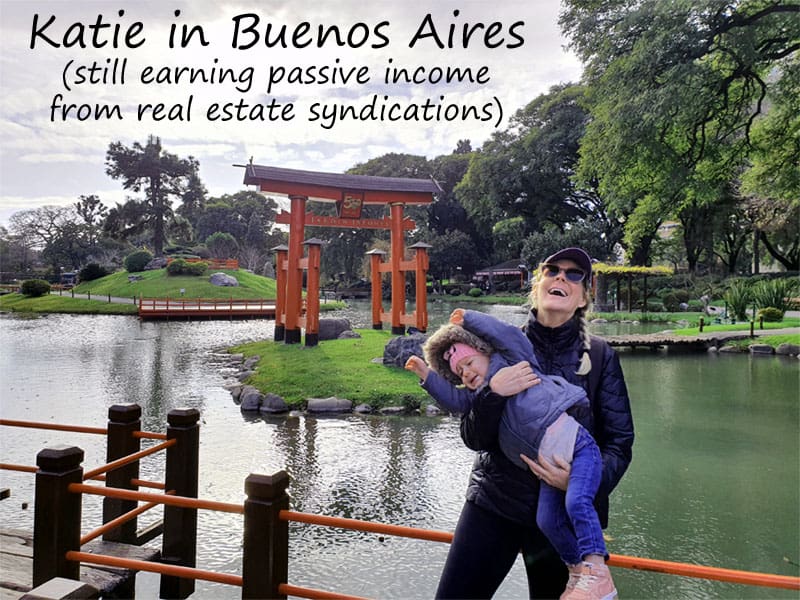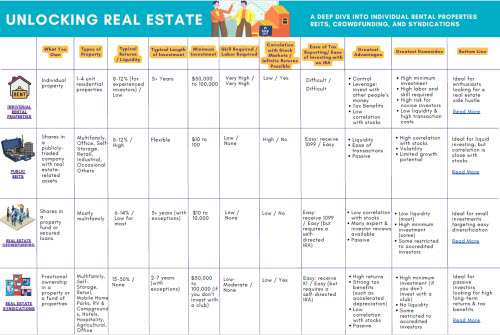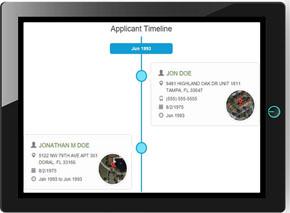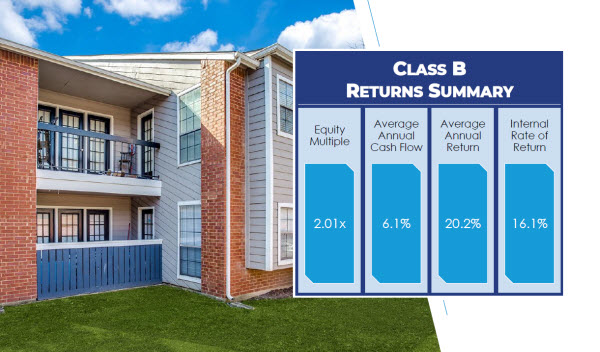The Big Picture On What Is An Accredited Investor:
- Accredited investors can access exclusive, high-potential investments but come with more significant risks and less regulatory oversight.
- The benefits of being an accredited investor include networking opportunities, early access, and prestige, but drawbacks include illiquidity, high fees, and fraud risk.
- Becoming an accredited investor can accelerate wealth-building, but due diligence is crucial to navigating the investment landscape.
Disclaimer
The information provided on this website is for general informational purposes only and should not be construed as legal, financial, or investment advice.
Always consult a licensed real estate consultant and/or financial advisor about your investment decisions.
Real estate investing involves risks; past performance does not indicate future results. We make no representations or warranties about the accuracy or reliability of the information provided.
Our articles may have affiliate links. If you click on an affiliate link, the affiliate may compensate our website at no cost to you. You can view our Privacy Policy here for more information.

Do the rich have access to better investments than the rest of us?
It turns out that they actually do.
I once offered to invest money with a hard money lender I knew who had an impeccable track record. He asked a simple question before continuing the conversation:
“Are you an accredited investor?”
I’d never heard the term before and asked how to become an accredited investor. As politely as he could, he explained that it wasn’t a matter of taking a test or filling out an online certification—It was a matter of money.
What Is an Accredited Investor?
An accredited investor is, in short, a wealthy investor. Defined by the Securities and Exchange Commission in Rule 501 of Regulation D, the SEC allows two different ways to qualify. An accredited investor must either have:
- A net worth over $1 million, not including your primary residence, or
- Annual income over $200,000 for the last two years, and an expectation to earn similar income this year (married couples must earn over $300,000).
Around 14.8% of households in America were deemed accredited investors.
Accredited investors can legally buy securities and investments not registered with the SEC, which opens the door to many investments unavailable to the average citizen—more on that later.
Well-known Accredited Investor
Before we get into it, let me show you a short list of well-known accredited investors. Who knows? You might be co-investors with these prestigious groups.
|
Accredited Investors |
Notable Investments |
|
Andreessen Horowitz |
Airbnb, Coinbase, Facebook, GitHub, Instagram, Lyft, Pinterest, Slack, Twitter |
|
Sequoia Capital |
Apple, Google, Instagram, LinkedIn, PayPal, Stripe, WhatsApp, YouTube |
|
Benchmark Capital |
Dropbox, eBay, Instagram, OpenTable, Snapchat, Twitter, Uber, Yelp |
|
Accel Partners |
Atlassian, Dropbox, Facebook, Flipkart, Slack, Spotify, Supercell |
|
Kleiner Perkins |
Amazon, Google, Nest, Twitter, Uber, Snapchat, Square, Spotify |
Who “Certifies” Accredited Investors?
The SEC requires companies to verify accredited investors when making investments. Rather than create a bureaucracy to “certify” accredited investors, the SEC simply mandates that whoever receives invested money verify that investors meet requirements.
When I approached a hard money lender about investing, he had to ask if I qualified as accredited and request evidence before accepting my money. Had he failed to verify my status and I didn’t meet requirements, I could have complained to the SEC if unhappy with the returns.
For example, if he lost my money, I could claim he should not have allowed me to invest and demand he return my money in full.
The Modified Definition Of “Accredited Investor”
In 2020, the SEC amended the accredited investor requirements to allow people with relevant credentials and professional certifications to qualify.
According to the SEC press release: “The amendments allow investors to qualify as accredited investors based on defined measures of professional knowledge, experience or certifications in addition to the existing tests for income or net worth.
“The amendments also expand the list of entities that may qualify as accredited investors, allowing any entity that meets an investments test to qualify.”
However, you probably don’t qualify under the new rules unless you work for a private equity fund or investment bank.
Accredited Investor vs. Qualified Investor: Is There a Difference?
Historically, qualified investors were different from accredited investors. That changed with the Dodd-Frank Wall Street Reform and Protection Act of 2010.
Before that, accredited investors were allowed to include equity in their primary residence toward their net worth to meet the $1 million requirement. Qualified investors were never allowed to include their home equity.
However, Dodd-Frank eliminated home equity from the net worth equation for accredited investors, so today, the terms “qualified investor” and “accredited investor” share the same definition and are used interchangeably.
Accredited vs. Non-Accredited Investors: Example Net Worth Comparison
Consider two reasonably successful people to illustrate how the makeup of your net worth affects whether you qualify as an accredited investor.
Kenneth paid down his mortgage rather than investing quite as aggressively. In fact, by usual accounting standards, Kenneth has a higher net worth than Kimberly. Yet Kenneth does not meet the accredited investor net worth requirement, while Kimberly does.
1. Primary Residence
| Kimberly | Kenneth | |
| Home Value | $500,000 | $500,000 |
| Mortgage | $450,000 | $200,000 |
2. Assets
| Kimberly | Kenneth | |
| Bank Accounts | $30,000 | $30,000 |
| IRA | $200,000 | $200,000 |
| Brokerage Account | $550,000 | $550,000 |
| Rental Properties | $450,000 | $300,000 |
| Total Included Assets | $1,230,000 | $1,080,000 |
3. Liabilities
| Kimberly | Kenneth | |
| Student Loans | $15,000 | $15,000 |
| Auto Loans & Other Liabilities | $20,000 | $30,000 |
| HELOC | $0 | $70,000 |
| Rental Property Mortgages | $100,000 | $100,000 |
| Total Included Liabilities | $135,000 | $215,000 |
| Net Worth (including residence) | $1,145,000 | $1,165,000 |
| Net Worth (excluding residence) | $1,095,000 | $935,000 |
As we can see, too much of Kenneth’s net worth is tied up in equity in his home for him to meet the accredited investor requirements.
How to Become an Accredited Investor
To become an accredited investor, you must either boost your finances or increase your net worth—preferably both—to build wealth and passive income faster!
Think holistically about building your income and net worth through the following broad strategies.
1. Get on a Higher Income Track
Where’s the income ceiling in your current career track? If you don’t like the answer, start looking at career tracks with higher earnings potential.
That might mean adding some professional certifications or even a new degree. For instance, if you currently work as a medical technician, you might consider getting a nurse or physician’s assistant degree. As a nurse, you could raise your earning potential by becoming a nurse practitioner.
Alternatively, you could leap from employee to employer in your industry. For example, a fast-food manager could open a franchised restaurant, and a hairstylist could open a salon. Of course, you don’t have to quit your day job and risk everything on a business venture.
2. Start a Side Hustle
Another way to earn more is to start a business or gig on the side of your full-time job.
It could mean participating in the gig economy, such as driving for Uber or Lyft. Or you could start a hobby business, building revenue and clients at your own pace.
When I launched SparkRental with Deni, we each earned income on the side — she was a real estate agent and property manager, and I was a freelance writer. We both still do a little work on the side to this day, if only to keep our fingers on the pulse of the real estate industry!
And who’s to say your side hustle can’t involve real estate investing?
3. Invest in Leveraged Real Estate
Rental properties generate passive income and are usually appreciated, both of which help you meet the accredited investor requirements. And when you leverage other people’s money, you can build rental income and real estate equity faster. Take the BRRRR strategy, for example.
While you have to come up with a down payment and closing costs, as soon as you finish renovating and refinance the property with a rental property mortgage, you can pull your down payment back out to reuse on a new rental property.
That allows you to continue building your rental portfolio, adding another stream of passive income with each property while recycling the same down payment. The equity in each property adds to your net worth.
4. Force Equity
The BRRRR strategy revolves around forcing equity by renovating older properties. But you don’t have to limit yourself to new properties: you can build real estate equity in your existing properties by adding value. You can also raise the rents in those units to improve your properties. The higher rents and higher equity help you become an accredited investor faster.
5. House Hack
House hacking scores you several wins in one fell swoop. It could involve the classic multi-family house hacking model, where you move into one unit and rent out the other(s) so your neighboring renters cover your mortgage. But there are plenty of other ways to house hack, from housemates to renting out storage space to bringing in a foreign exchange student.
First, you can buy a property with a minimum down payment. For example, Fannie Mae and Freddie Mac both offer 3% down payment loans, but you must move into the property for at least a year. Second, owner-occupied mortgage loans come with lower interest rates and down payments than rental property mortgages.
But best of all, house hacking can let you “live for free” by eliminating your housing payment. Considering that the average American spends 25-50% of their income on housing, that alone can skyrocket your savings rate.
6. Increase Your Savings Rate
The higher your savings rate, the faster you can build wealth and passive income. Period. Because that’s where the wealth to invest comes from: the gap between what you earn and what you spend. You can quickly build wealth by reducing your living expenses and funneling more money into investments.
Our most recent case study reached financial independence in under three years with her high savings rate! A high savings rate and fast wealth creation also beget other savings. Check out these surprising ways the FIRE lifestyle can save you even more money than expected. Save more, invest more, and become an accredited investor before you know it.
The Pros & Cons of Being an Accredited Investor
It may sound strange, but being an accredited investor comes with its own set of upsides and downsides—more on the downside later.
The Pros
Higher Return Potential—As an accredited investor, you have access to deals that are off-limits to the masses. These investment prospects are early-stage companies with explosive growth potential and alternative assets that can deliver returns that make the stock market look like a piggy bank. Top VC funds return 15-27% annually, far surpassing the S&P 500’s 9.9% over the last ten years.
Less Regulatory Burdens—Companies love raising money from accredited investors because it means less paperwork and red tape. They don’t have to jump through all the hoops required for a public offering, which means lower compliance costs and more flexibility.
Lower Fees and Costs—Speaking of costs, accredited investors often enjoy lower fees and investment minimums than the general public. Since companies can skip the lengthy registration process, they can pass those savings on to investors. This means you can get in on exclusive deals without breaking the bank or getting nickel-and-dimed on fees.
Networking—One of the biggest perks of being an accredited investor is the opportunity to rub elbows with the business world’s movers and shakers. You’ll have access to exclusive events, conferences, and sophisticated investment clubs where you can network with many high-net-worth individuals.
Prestige and Status—Let’s face it: being an accredited investor is a status symbol. It’s a way of showing the world you’ve made it to the big leagues. When you casually mention that you’re an accredited investor at a dinner party, people take notice.
The Cons
Higher-Risk Investments—One of the biggest dangers of being an accredited investor is the potential for higher-risk investments. It may sound untrue, but many deals available to these investors are highly complicated or involve early-stage companies that are more likely to fail than succeed. In fact, between 25% to 30% of new companies are unsuccessful.
Less Regulatory Oversight—Another potential downside of being an accredited investor is the lack of regulatory oversight. Many alternative investments offered to accredited investors are exempt from registration and disclosure requirements, and investors have less protection if something goes wrong.
Higher Fees at Times—While some accredited investor deals may have lower fees, others can be quite expensive. For example, hedge and private equity funds often charge high-performance fees or “carried interest” that can eat into returns.
Illiquidity – One of the biggest challenges of being an accredited investor is the lack of liquidity in many alternative investments. Unlike stocks or bonds that can be easily bought and sold on public markets, many accredited investor assets like venture capital or private business stakes have a long time horizon before any returns are realized.
Due Diligence Challenges – Another potential drawback of being an accredited investor is obtaining reliable information about private companies or alternative investments. Private companies can be much more opaque than public companies that must file regular financial statements and disclosures.
Investments Only Available to Accredited Investors
What’s the big deal about becoming an accredited investor, anyway?
Accredited investors can participate in investments not available to most people: investments either not registered with the SEC or under reduced regulation. The SEC exists to protect mom-and-pop investors who know little about investing, but they acknowledge that wealthier, more sophisticated investors often don’t need their nannying. They, therefore, allow them more freedom to invest without the government signing off on the investment.
More common examples of investments only available to qualified investors include:
Crowdfunding Investments—Before the SEC defined special rules for crowdfunding investments, only accredited investors could participate in them. Today, a few crowdfunding platforms allow non-accredited investors, such as Fundrise and Streitwise. Even so, most still only accept money from qualified investors.
Real Estate Syndications—Generally speaking, only accredited investors can participate in real estate syndications. These refer to private investments in apartment or commercial buildings, privately funded by a handful of investors who partner on the deal.
Private Equity Funds & Hedge Funds—Most private equity funds and hedge funds only allow participation by accredited investors.
Venture Capital—Venture capital companies typically raise money privately from accredited investors. They use that money to fund promising startups, usually taking a partial ownership stake. While many of these startups fail, some experience spectacular success, earning enormous returns for venture capitalists and their investors.
Whether you meet the accredited investor requirements or not, try diversifying into more types of real estate investments to spread your risk and returns.
Do These Exclusive Investments Perform Better?
With higher risk comes higher returns.
The wealthy don’t stay that way if they invest recklessly, accepting higher risk than the potential returns justify. For example, many real estate syndications earn investors returns in the 10-20% range, beating out the long-term average returns for stocks and bonds.
One study by the American Investment Council reviewed earnings from 163 pension funds that had invested in bonds, public equity (publicly-traded stocks), and private equity only available to qualified investors. They found bonds earned an average of 5.3%, public equity earned an average of 6.1%, but private equity earned 8.6%.
FAQs
Can I invest if I am not an accredited investor?
Yes, you can invest even if you’re not an accredited investor, but your options are more limited than accredited investors. You can even invest in a hedge fund as per SEC, though only up to 35 non-accredited investors over the life of the fund
What is the difference between accredited and unaccredited investors?
The main difference between accredited and non-accredited investors is that accredited investors meet specific income or net worth requirements set by the SEC, while non-accredited investors don’t.
Can an LLC be an accredited investor?
Yes, since August 2020, an LLC can be an accredited investor if it meets specific criteria set by the SEC, even if its owners do not qualify.
Is it worth being an accredited investor?
Of course, being an accredited investor is worth it as it grants you access to investments with potentially higher returns – that’s 100% worth it.
What is higher than an accredited investor?
A qualified purchaser is a higher classification than an accredited investor, with access to a broader range of investment opportunities, including both 3(c)(1) and 3(c)(7) funds. In contrast, accredited investors are limited to 3(c)(1) funds.
What is the minimum investment typically required for a hedge fund?
The minimum investment for a hedge fund is typically $1 million to $10 million. However, some funds allow access at lower minimums.
Final Thoughts
What is an accredited investor? It’s someone with an “unfair advantage” service who can access higher-yield investments than the average person—and it’s a category you want to enter as quickly as possible. Once you meet the accredited investor requirements, you can start earning even greater returns on your investments and snowball your wealth even faster.♦
What steps are you taking to become an accredited investor? What could help you get there faster?
























Hey Brian, I’m an investor and want to be an accredited investor. I follow your article and it’s giving me more knowledge about investing.
Thank you!
Thanks Robert, so glad to hear it’s been useful for you!